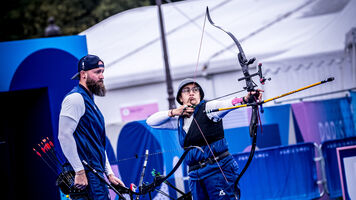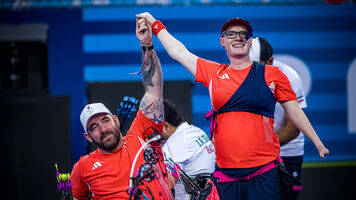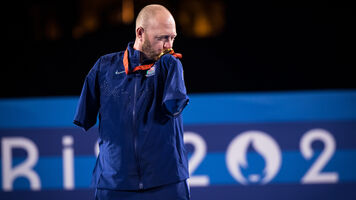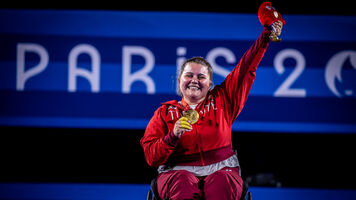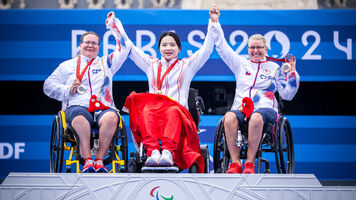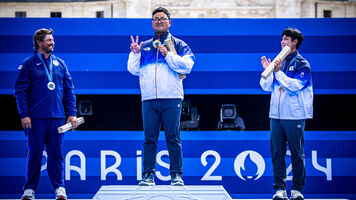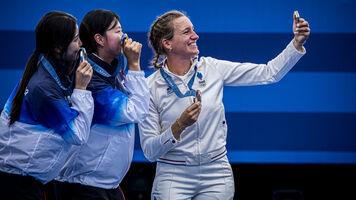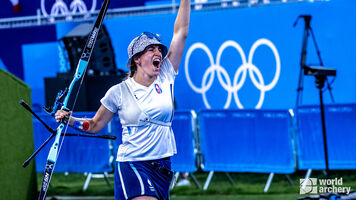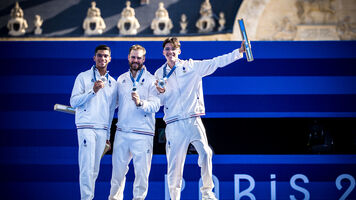What have we missed? Dutch team showcases new faces at World Series invitational
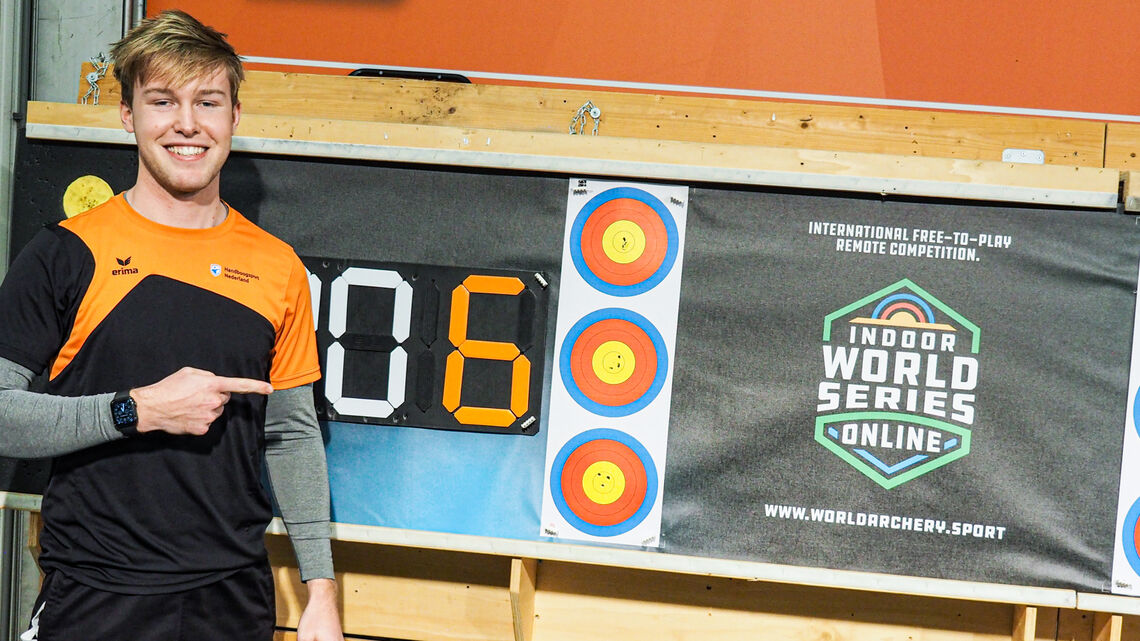
The Dutch Olympic squad held a recurve-only tournament, inviting archers from neighbouring Belgium, at its training centre in Papendal to coincide with the third remote stage of the 2021 Indoor Archery World Series.
It was a small event, but the results highlighted something that’s likely to become abundantly clear once normal competition returns.
The world we left in 2019 probably won't be the world we return to – hopefully, in 2021 – in terms of the archers who are filling the higher rankings on the results list.
Gijs Broeksma and Laura van der Winkel stood out with victories in Papendal.
Among one of the most talented international rosters of recurve men, featuring the fourth-place finishers at the past two Olympic Games in Sjef van den Berg and Rick van der Ven, it was 21-year-old Broeksma who was the most impressive.
He swept world-number-six Steve Wijler in the televised final, not missing the 10-ring through four sets in the 6-2 victory.
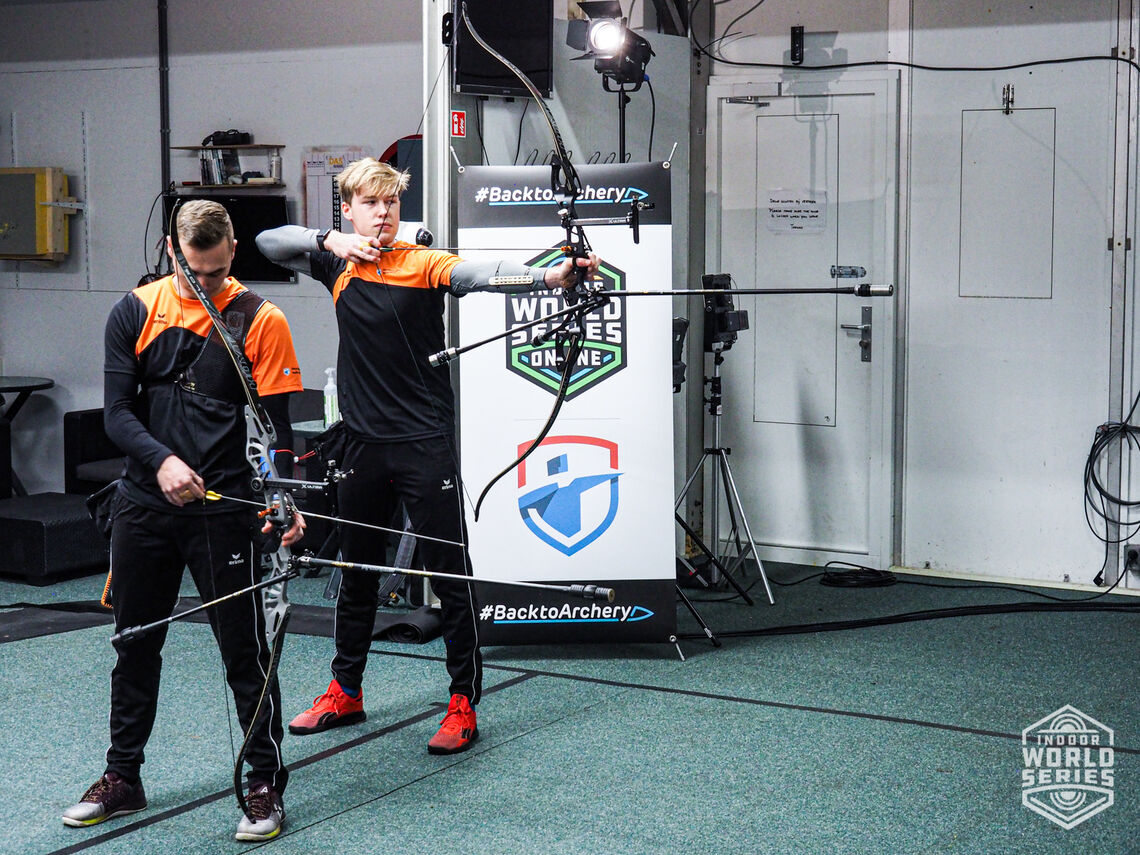
(It mirrored Wijler’s performance at the Lausanne Invitational, the previous televised live event, where the European Champion did the same to German international Florian Unruh.)
“It was a pretty good final, so I’m pretty pleased with that,” said a grinning Broeksma. “Steve is quite good in my eyes, too, so I was quite nervous. It’s a super-good feeling to win, and a super-good feeling to win here.”
Sjef, Rick and Steve won the Netherlands a full men’s quota to the Tokyo 2020 Olympic Games at the last world championships, which were held in the Dutch city of ’s-Hertogenbosch in the summer of 2019.
All three archers are currently ranked in the world top 10.
Of course, this small event in Papendal only presents a small sample size. But if Gijs’ emergence signals the addition of a fourth man on the Dutch team who cannot only keep up with but compete against and push the others, this squad has to be seen as a favourite for the Games.
While the recurve men have been a recent (and historical) strength for the Netherlands, there hasn’t always been the same world-class results from the recurve women.
That changed somewhat with the importation of Gaby Schloesser (formerly Bayardo), who represented Mexico at the Rio 2016 Olympic Games. Since donning Dutch orange, she has climbed the podium at the European Games and secured the Netherlands its first women’s Olympic quota spot in two decades.
The need to find a complementary female talent had become all the more poignant with the imminent Olympic debut of the mixed team event.
Van der Winkel, at just 19 years of age and with a single previous international senior appearance under her belt, looks tantalisingly close to joining Gaby as a realistic option in the pairs event.
Schloesser won the first invitational in Wohlen in November and finished second at the second in Lausanne.
She was the less comfortable of the pair when they faced in the final in Papendal, dropping too many arrows wide in the first and third sets. Though shooting 30s in the second and fourth, she was always matched or bettered by her young teammate.
Laura shot a confident 10 with her third arrow of the fourth set to close out the match, having dropped only two points, and won, 6-2.
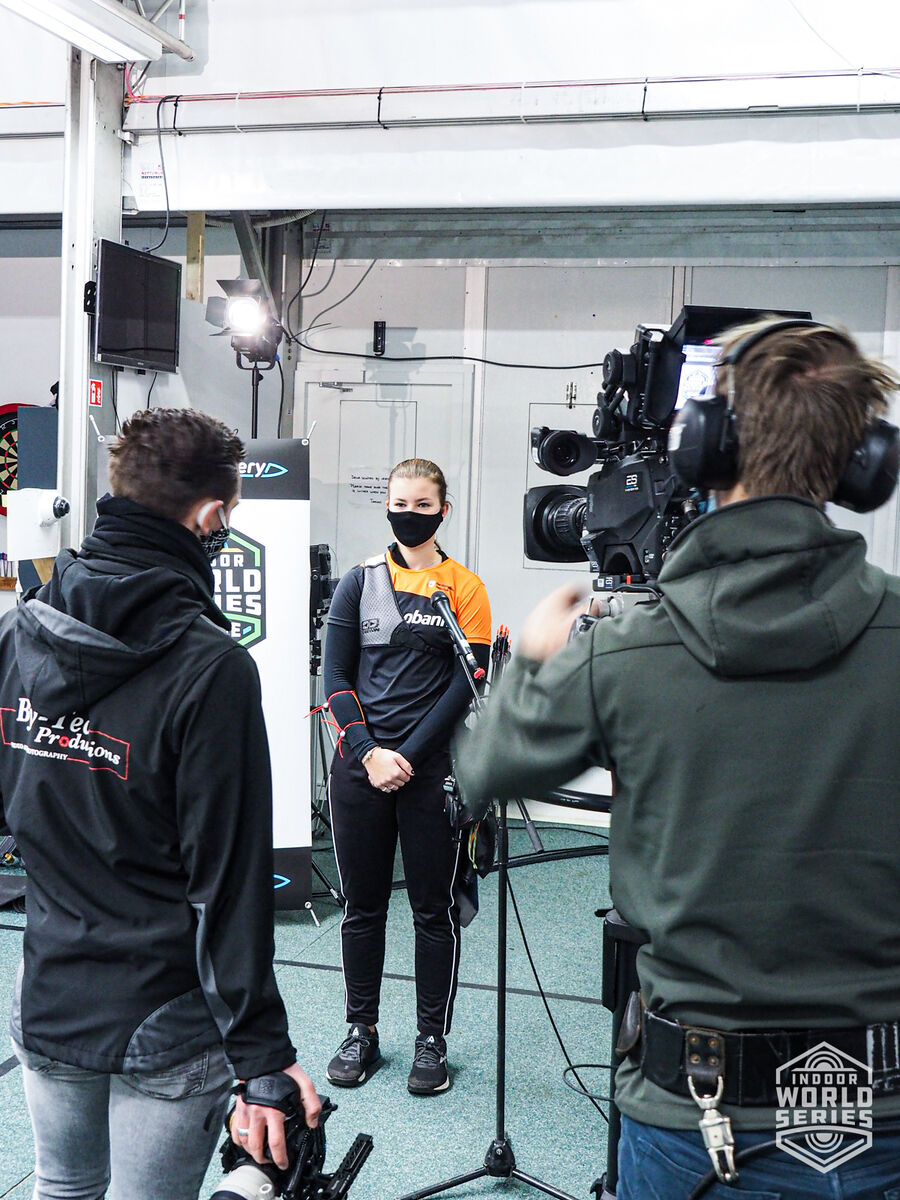
“I’m really happy. I’m glad I could keep my nerves under control so I could shoot the match and win eventually,” she said during the post-match interview. “I had no doubt in my mind. I was just concentrating on my shot, trusting myself and shooting the 10.”
Dutch head coach Ron van der Hoff has been pragmatic in his approach to practise over the past difficult year.
He said that while uncertainty abounds about when his team will return to the international competition field, the competitions that are available – like the remote format for the Indoor Archery World Series and this small invitational in Papendal – offer the motivation archers need to retain focus, remain prepared and enjoy the sport.
At a glance, it looks like the approach has worked, with talented younger archers like Gijs and Laura showcasing significant improvement.
It also begs the question: What else have we missed over the past year? Who will be in shape when international competition returns in full? And just how much will the landscape have changed when we finally contest the Olympic titles in Tokyo?




